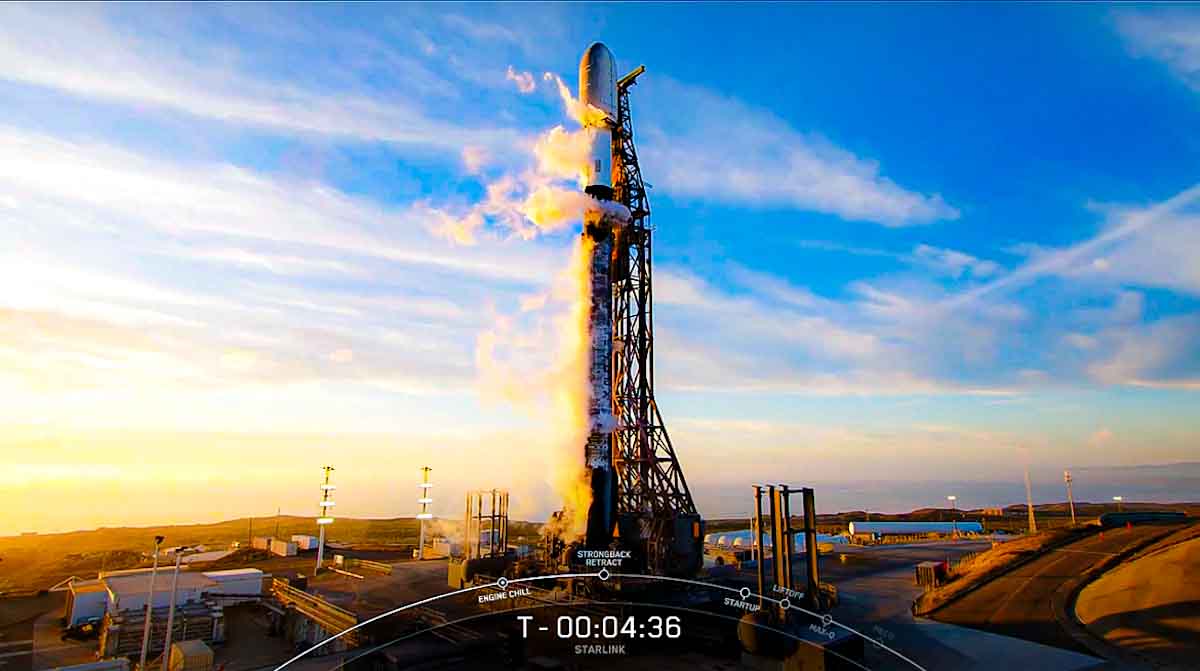On February 22, 2025, at 8:38 p.m. EST (5:38 p.m. PST), SpaceX successfully launched a Falcon 9 rocket carrying 22 Starlink satellites into low Earth orbit (LEO) from Space Launch Complex 4 East (SLC-4E) at Vandenberg Space Force Base in California.This mission, designated Starlink 15-1, marks a significant milestone in SpaceX’s ongoing efforts to expand its global broadband internet constellation.
Watch Falcon 9 launch 22 @Starlink satellites to orbit from California https://t.co/filc5tO9Fu
— SpaceX (@SpaceX) February 23, 2025
Deployment of 22 @Starlink satellites confirmed
— SpaceX (@SpaceX) February 23, 2025
Mission Overview
The Falcon 9’s first stage booster, identified as B1082, was on its 11th flight, having previously supported missions such as USSF-62, OneWeb Launch 20, and eight prior Starlink deployments. Approximately eight minutes after liftoff, the booster successfully landed on the droneship “Of Course I Still Love You,” stationed in the Pacific Ocean.
This achievement underscores SpaceX’s commitment to reusability and cost-effective access to space.
The 22 Starlink satellites were deployed into their intended orbit about 62 minutes post-launch, further enhancing the constellation designed to provide high-speed internet access across the globe, particularly in underserved and remote regions.
Expanding the Starlink Network
With this launch, SpaceX has now deployed over 8,000 Starlink satellites since the program’s inception. As of February 21, 2025, approximately 7,078 of these satellites remain operational in orbit.
In 2025 alone, the company has launched 376 Starlink satellites, reflecting its aggressive strategy to bolster the constellation’s capacity and coverage.
The Starlink 15-1 mission targeted a 70-degree inclination orbit, a trajectory first utilized by SpaceX in September 2021 during the Starlink 2-1 mission. This inclination allows for improved coverage over mid-latitude regions, enhancing service quality for users in these areas.
Advancements in Satellite Technology
The satellites launched in this mission are part of the Starlink V2 Mini series, which incorporate several enhancements over previous iterations. These upgrades include improved antennas and increased bandwidth capabilities, enabling the network to support a larger number of users with higher data throughput.
Additionally, the V2 Mini satellites are equipped with inter-satellite laser links, allowing them to communicate with each other without relying solely on ground stations. This feature reduces latency and enhances the network’s overall resilience.
Looking Ahead
SpaceX’s launch cadence remains robust, with plans for additional Starlink missions in the near future. Notably, a subsequent launch is scheduled from Cape Canaveral Space Force Station, aiming to deploy 21 Starlink satellites, including 13 equipped with Direct-to-Cell capabilities.
This technology is poised to revolutionize mobile connectivity by enabling direct communication between satellites and standard cellular devices, potentially eliminating dead zones and providing seamless coverage worldwide.
The successful deployment of the Starlink 15-1 mission not only reinforces SpaceX’s leadership in satellite internet services but also exemplifies the company’s commitment to innovation and accessibility.
As the constellation continues to expand, users can anticipate improved service quality and broader coverage, bringing the world closer to ubiquitous high-speed internet access.
For those interested in viewing the launch, SpaceX has made the footage available on their official channels, offering a firsthand look at the mission’s execution and the impressive capabilities of the Falcon 9 rocket.
